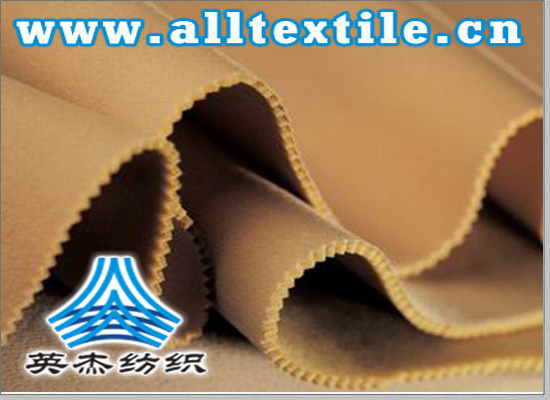Overview of fiberglass nonwovens
Fiberglass nonwoven fabric is a name frequently used in the foreign fiberglass industry, and it represents a large category of products.
Glass fiber nonwovens include high-speed air-blown glass microfiber mats, wet glass fiber mats and needle-punched glass fiber mats.
ADFORS’s fiberglass nonwoven products include wet-laid and dry-laid fiberglass mats, etc. Glass fiber nonwoven products from PPG Company in the United States
It is needle punched felt and continuous strand felt. The fiberglass nonwoven products division of American fiberglass processor AFG specializes in the production of needle felts. Europe
3B Fiberglass Company classifies its fiberglass continuous strand mat as a nonwoven product.
Various forms of fiberglass nonwoven products are described below.
Use asphalt shingles based on fiberglass mat. In the 1980s, Owens Corning acquired two European sheet felt companies. Currently, the company
It operates 5 felt factories around the world, respectively in the Netherlands (1), the United Kingdom (1), and the United States (3). Most of the current production of thin mats
It is produced by the wet method, but there are still thin felts produced by the dry method. Recently, Owens Corning announced investment in a new facility in North Carolina, USA
A state-of-the-art wet-laid matting plant to support the company’s participation in the growing fiberglass nonwovens market. The plant will use formaldehyde-free
Binder produces Sustaina thin felt products and will respond to user demand for bio-based products.
, can provide a variety of fiberglass nonwoven products. Its modern factories are located in Italy, the Czech Republic, the Netherlands and Poland.
The company continues to improve its felt manufacturing process and adhesives to provide innovative solutions, including soft-touch felt, improved interior
Formaldehyde-free mats for air quality, adhesives utilizing renewable resources, etc.

1.1 Dry felt
The dry process generally refers to the glass fiber being produced directly from the glass melting furnace, settling on the conveyor belt, and then adding a binder and solidifying in the oven.
, and then wind up. The thin felt produced by this method has a maximum width of 1.3m, is very soft in texture, and has good puncture resistance.
A unique process is used to produce thin glass microfiber mats. The microfibers are transported by high-speed airflow to form a fiber web, and the adhesive is applied
After the binder is cured, it is cured in the oven. This material can be attached with polyester spunbond cloth or fiberglass material as a backing, and the resulting high-bulk thin felt is mainly used in
High-efficiency filter media for HVAC (heating, ventilation and air conditioning) systems.
In addition, Australia’s Regina Glass Fiber Company specializes in C-glass fiber mats. The company says its thin felt products are made using a dry process, with thin felts made from continuous
Made of continuous fiberglass monofilaments, it is lighter than thin mats produced by other methods and contains less chemical binders. And which method should be used?
Made in France and not introduced by the company.
Hand lay-up. The felt adhesive is a styrene-acrylic adhesive compatible with vinyl ester, polyester and epoxy resins. The other is
Regina LN-type felt uses a styrene-based binder to provide faster saturation.
Molding felt. ADFORS’ wet-laid mats used for molding can be used in a variety of molding processes (hand lay-up, spraying, RTM, infusion molding, etc.),
Its resin absorption rate is low, and the thin felt uses an insoluble binder; the dry-process thin felt used for this purpose has a soft touch, excellent adhesion, and is easy to use.
The weight is 30~100g/m2, and soluble binder is used. Regina’s molded mats are designed for hand lay-up, hot/cold pressing processes, and are flexible
It is soft and can be formed into surfboards, boats, furniture, car cowl components, etc. These molding felts use an acrylic adhesive.
Pultrusion. Among the various reinforcement materials used in pultrusion are fiberglass mats used as surface reinforcements.
Winding and forming. Owens Corning offers a variety of mats for use in wrap forming. The mandrel can be covered with thin felt to provide anti-corrosion and/or high quality products.
appearance. ADFORS’s C-glass fiber AP 35 dry-laid mat is suitable for winding molding. Regina’s FW type thin felt is used for
The strength-friendly acrylic adhesive makes this felt suitable for automatic winding machines.
A printed circuit board. Printed circuit boards based on CEM3 laminates provide a large market for wet-laid fiberglass mats. This kind of laminate
Dimensional stability is better than paper-based phenolic laminates and processing costs are lower than glass cloth-reinforced laminates. Wet laid mats are available in a variety of weights and
Available in widths suitable for all manufacturing processes and compatible with epoxy resins. High uniformity, excellent fiber distribution and surface finish are





